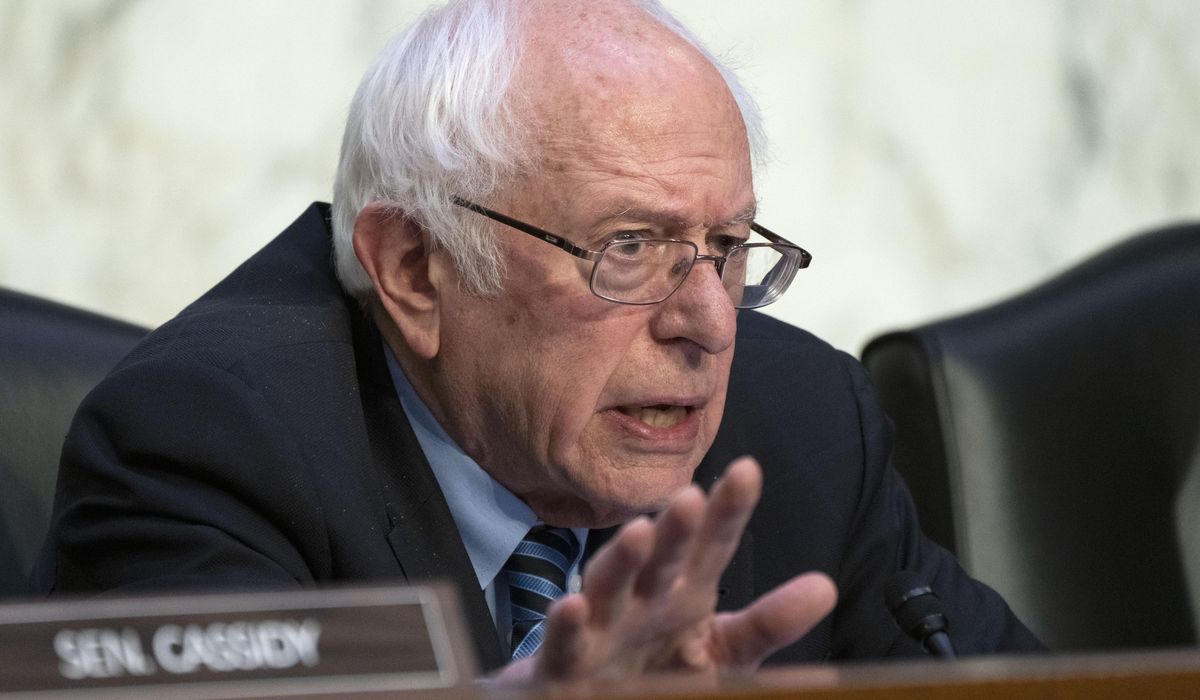


Democrats’ leading proposal to hike the federal minimum wage to $17 an hour would deliver a raise to millions of workers but also would chase about 700,000 people out of jobs, according to a new analysis by the Congressional Budget Office.
The losers would disproportionately be younger, less educated workers, CBO said.
The bill, sponsored by Sen. Bernard Sanders, Vermont independent, and backed by a majority of Senate Democrats, would raise the wage over five years, starting with a $9.50 rate in 2024 and ticking up to $17 in 2029. Thereafter it would be indexed to the overall job market.
The current federal minimum wage is $7.25.
CBO looked at the situation in 2029, when the $17 figure would be fully in place, and said it would mean a raise for 9.7 million people whose pay would otherwise be below that level. It could also help millions of others whose wages are just above $17 and for whom employers would see pressure to give them raises, too.
But 700,000 people who would have jobs under the current $7.25 rate would no longer be working under the higher wage, CBO said.
Sen. Bill Cassidy of Louisiana, the top Republican on Mr. Sanders’ committee, said the CBO report should doom the chances for the $17-an-hour bill.
“A higher minimum wage does not mean much to a worker who loses their job because of it,” he said.
He’s leading a group of Republicans proposing increasing the minimum wage to phase in to an $11-an-hour rate, but couple it with a requirement that all businesses use E-Verify, the government’s current voluntary tool to try to weed illegal immigrants out of the workforce.
Another result of Mr. Sanders’ proposal would be a reduction in poverty, with some 400,000 families lifted above the line.
Higher wages would also mean higher prices for some goods and services, and it would mean lost revenue for some businesses. Those would chiefly strike at the wealthy, CBO said.
Mr. Sanders’s office didn’t respond to a request for comment on the report.
Chances of a minimum wage hike clearing this Congress are next to nil, particularly given the partisan divides and the difficulty of even getting basic bills like the annual spending measures passed.
The last time Capitol Hill approved a hike was in 2007 as part of a massive measure that also funded Hurricane Katrina recovery efforts and provided $120 billion to fight the wars in Iraq and Afghanistan. It passed in a Democrat-controlled Congress and was signed by Republican President George W. Bush.
That law took the minimum wage from $5.15 an hour to the current $7.25.
While that’s a national minimum, 30 states have set higher minimums. No state has a rate as high as $17 an hour, though the District of Columbia does have a $17 rate.
Mr. Sanders, chairman of the Senate Health, Education, Labor and Pensions Committee, has ratcheted up his ask as time goes on. In 2013, he was backing a call to hike the wage to $10.10 an hour, and by 2015 he was backing a $15 rate.
This year he went even higher, saying inflation has risen and so should the wage hike.
In addition to the job situation, CBO said hiking the minimum wage to $17 would cost the federal government $46 billion in new spending, chiefly from having to pay more for health workers through Medicare and Medicaid.
CBO said it ran 1,000 simulations and its projections are the best guess out of a range of options, with wildly different outcomes.
For instance, analysts said they determined there was a 33% chance that the job losses would be between zero and 500,000, a 33% chance of between 500,000 and 1.4 million, and a 33% chance of extreme cases, including actual gains in employment or losses of more than 1.4 million jobs.
At the 700,000 job-loss level, since the losses would build gradually as the wage rate increases, some of those who became jobless early on will have dropped out of the labor force altogether by 2029, CBO said.
• Stephen Dinan can be reached at sdinan@washingtontimes.com.
